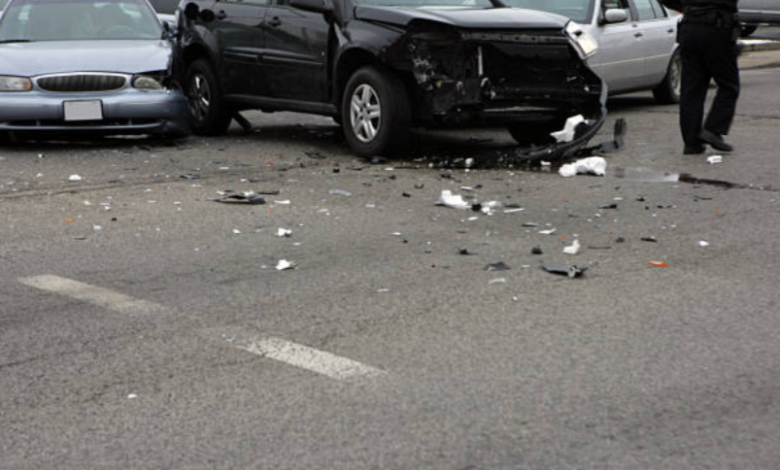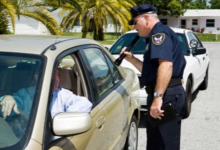Chain-Reaction Accidents in Houston: Understanding Multi-Vehicle Liability

Multi-vehicle collisions create complex legal situations that can leave accident victims struggling to understand their rights. When three or more vehicles become entangled in a single crash, determining responsibility becomes significantly more challenging than typical two-car accidents. These chain-reaction events often result in causing serious injuries and substantial property damage across multiple parties.
Houston car accident statistics reveal that chain-reaction collisions account for a substantial portion of serious traffic incidents on local highways and major roadways. The combination of heavy traffic, high speeds, and challenging weather conditions creates perfect conditions for these devastating multi-vehicle crashes. Understanding how liability works in these situations can help accident victims protect their legal interests and pursue appropriate compensation.
Why Houston’s Highways Create Perfect Conditions for Multi-Car Pileups
Dense Traffic Volume on Major Corridors: Houston’s interstate system carries some of the heaviest traffic loads in Texas, with vehicles often traveling in close proximity at high speeds. Interstate 45, Interstate 10, and the Sam Houston Tollway experience particularly heavy congestion during peak hours, creating situations where a single mistake can trigger multiple collisions. The sheer volume of vehicles means that when one accident occurs, several others may follow within seconds.
Weather-Related Visibility Issues: Gulf Coast weather patterns bring sudden rainstorms, dense fog, and occasional ice conditions that dramatically reduce visibility and road traction. These weather events can catch drivers off guard, leading to rapid chain-reaction crashes when vehicles cannot stop in time. Morning fog is particularly dangerous on Houston’s highways, as it can reduce visibility to just a few car lengths while traffic continues at normal speeds.
Construction Zone Complications: Ongoing highway construction and maintenance projects create lane restrictions, sudden merges, and altered traffic patterns that increase collision risks. Construction zones often force vehicles into tighter spaces while maintaining highway speeds, creating conditions where small mistakes become major accidents. The combination of concrete barriers, reduced lanes, and confused drivers creates dangerous situations throughout the metropolitan area.
Commercial Vehicle Traffic: Houston’s position as a major port city and industrial center means substantial commercial truck traffic is plying on all major highways. When large trucks are involved in chain-reaction accidents, the results are often more severe due to their size and weight. These vehicles require much longer stopping distances and can cause devastating damage when they cannot avoid becoming part of multi-vehicle crashes.
Understanding Fault Determination in Multi-Vehicle Collisions
Initial Impact Analysis: Investigators begin by determining which vehicle caused the original collision that triggered the chain reaction. This involves examining physical evidence, analyzing vehicle positions, and reviewing any available traffic camera footage or witness statements. The driver who caused the initial impact often bears primary responsibility, but this determination requires careful analysis of all available evidence.
Secondary Collision Responsibility: Drivers involved in subsequent collisions may also share responsibility if they failed to maintain safe following distances or were driving inappropriately for conditions. Texas follows a comparative fault system, meaning each driver’s percentage of responsibility affects their ability to recover damages. Even drivers who were rear-ended may bear some responsibility if they contributed to the accident through their actions.
Negligence Factors: Courts consider various factors when assigning fault in multi-vehicle accidents:
- Following distance violations where drivers failed to maintain adequate space between vehicles.
- Speed-related negligence including driving too fast for weather or traffic conditions.
- Distracted driving behaviors such as texting, phone calls, or other activities that diverted attention from traffic.
- Impaired driving involving alcohol, drugs, or medications that affected driving ability.
- Vehicle maintenance issues including brake failure, tire problems, or other mechanical defects.
Evidence Collection Challenges: Multi-vehicle accidents create complex evidence preservation requirements, as multiple insurance companies and legal representatives may be investigating the same incident. Critical evidence can include skid marks, vehicle damage patterns, electronic data recorders, and traffic signal timing records. The more vehicles involved, the more complicated evidence analysis becomes for all parties.
Read Also: The Importance of a Lawyer in Negotiating Fair Severance Packages After Wrongful Dismissal
Legal Challenges in Securing Fair Compensation
Multiple Insurance Policy Complications: Multi-vehicle accidents often involve several different insurance companies, each with their own coverage limits and policy terms. Accident victims may need to file claims with multiple insurers, and these companies may attempt to shift responsibility to minimize their own financial exposure. Coordinating between different insurance providers can significantly delay settlement negotiations and complicate the claims process.
Adequate Coverage Concerns: When multiple victims are injured in the same accident, insurance policy limits may not provide sufficient coverage for all claims. Texas minimum insurance requirements are relatively low compared to the potential costs of serious injuries, meaning some accident victims may not receive full compensation even when fault is clearly established. This situation becomes more problematic as the number of involved vehicles and injured parties increases.
Statute of Limitations Pressure: Texas law provides a limited time window for filing personal injury claims, and multi-vehicle accidents can consume valuable time during the investigation and evidence-gathering phase. Accident victims must balance the need for thorough case preparation with legal deadlines that cannot be extended. The complexity of multi-vehicle cases means that legal action often requires more preparation time than simpler accidents.
Settlement Coordination Challenges: When multiple parties are seeking compensation from the same at-fault drivers or insurance policies, settlement negotiations become exponentially more complex. Each party’s legal team must consider how their client’s settlement might affect the available funds for other victims. This dynamic can create competitive situations that work against accident victims’ interests and prolong the resolution process.
Conclusion
Chain-reaction accidents present unique challenges that require experienced legal guidance to navigate successfully. The combination of multiple parties, complex fault determination, and insurance coverage issues means that accident victims face significant obstacles in securing fair compensation. Understanding these challenges is the first step toward protecting your legal rights after a multi-vehicle collision. If you have been involved in a chain-reaction accident, consult with a qualified personal injury attorney who can help you understand your options and pursue the compensation you deserve.






